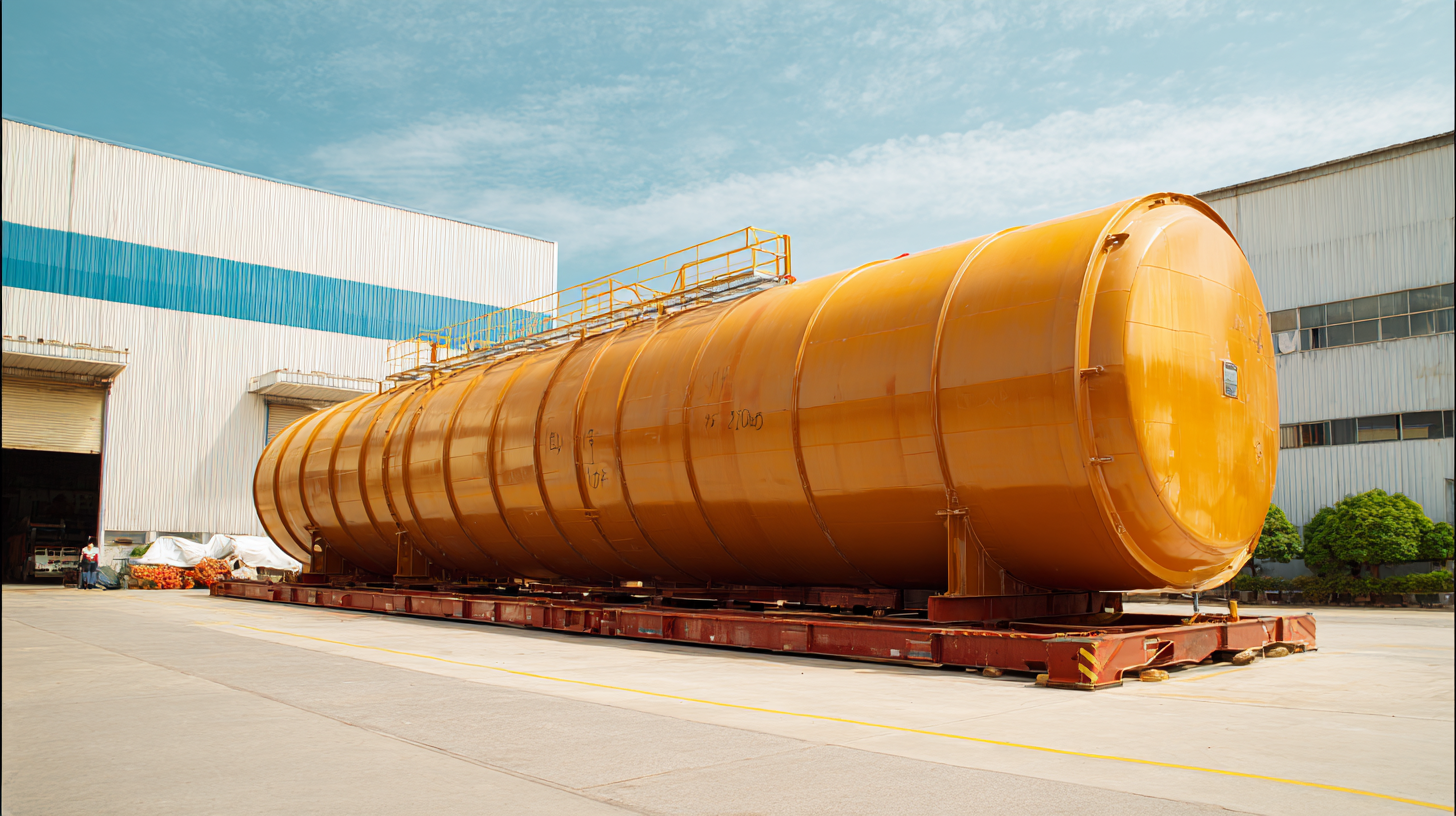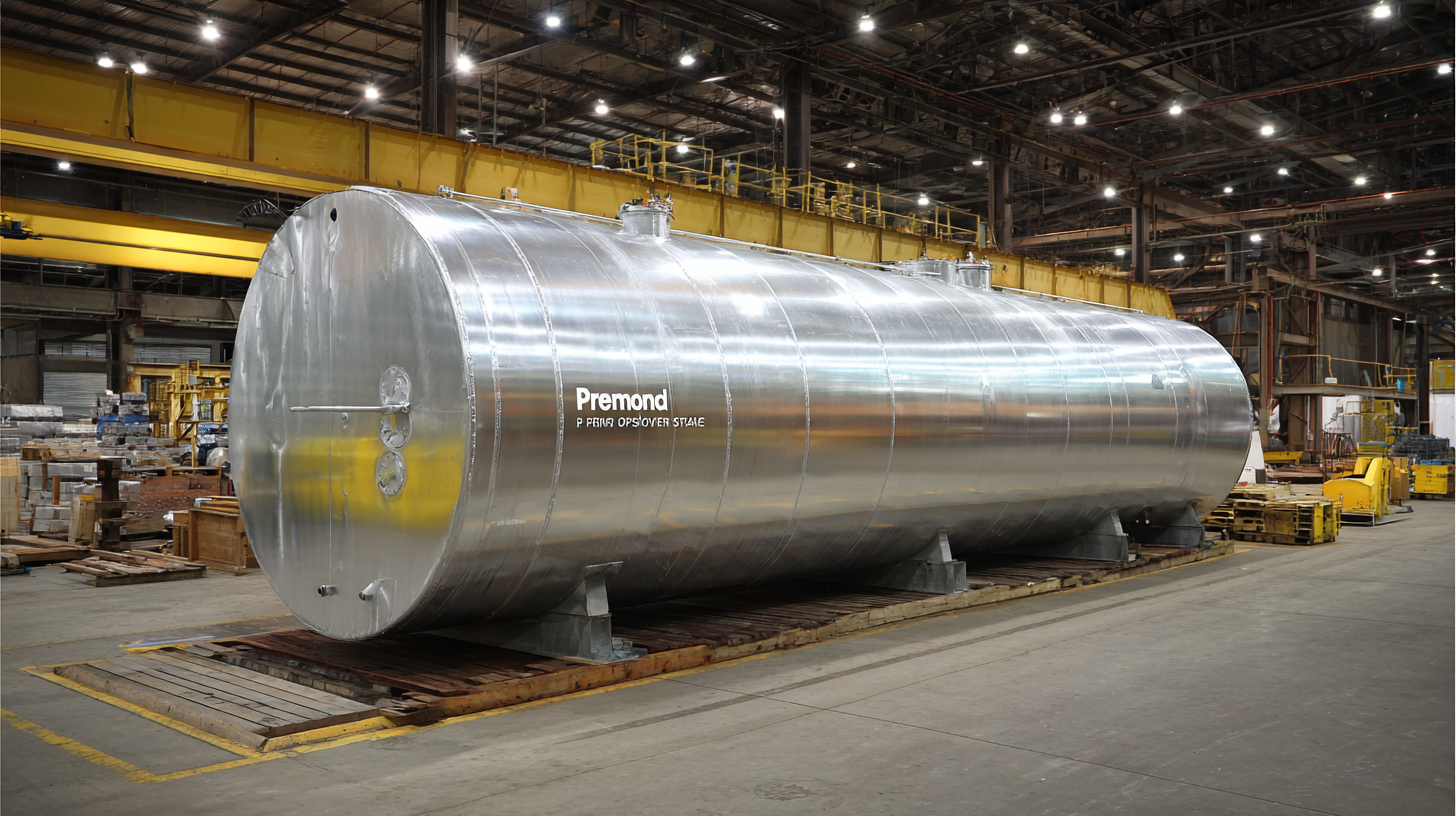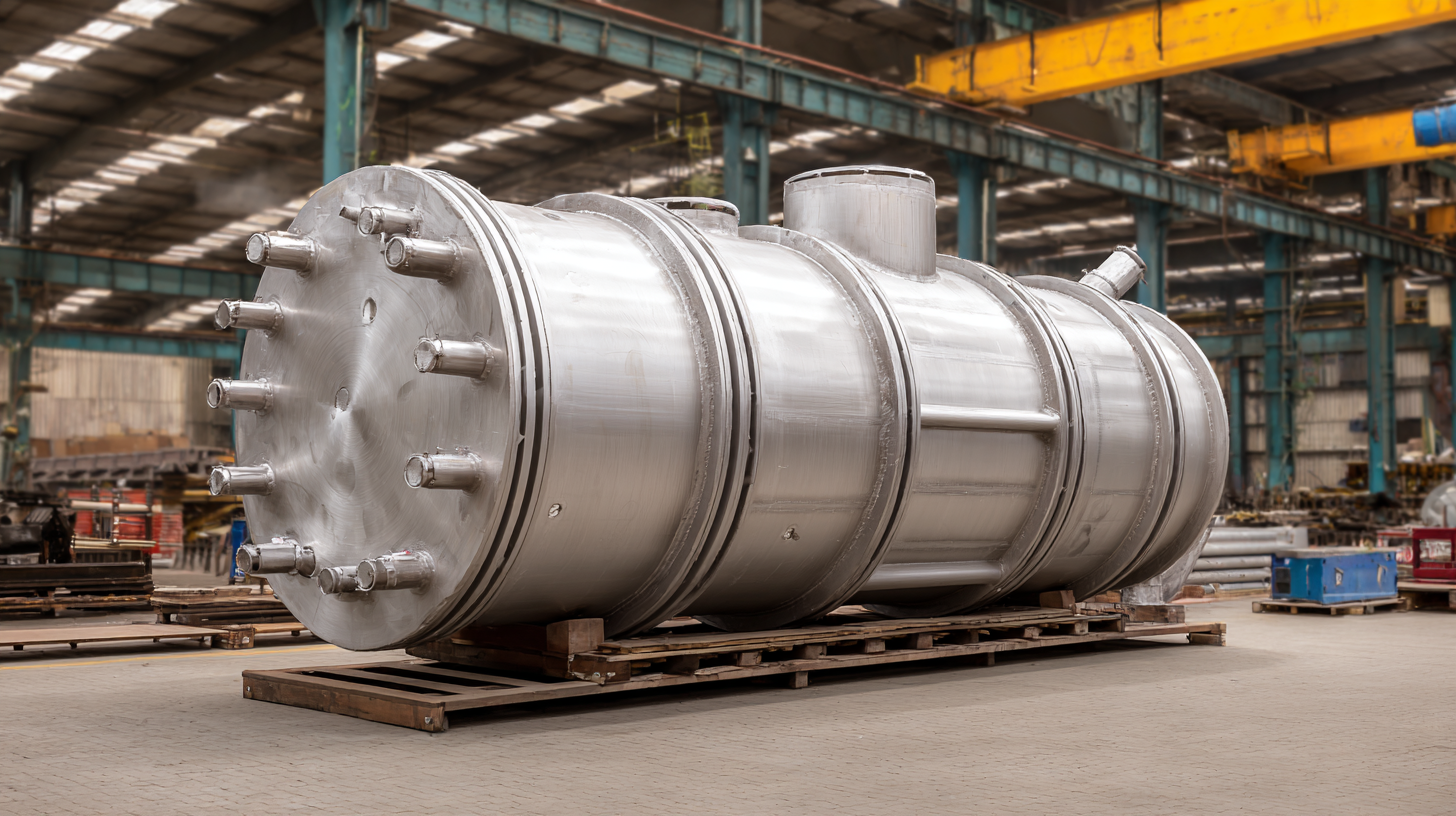When it comes to selecting the right pressed steel tank for your industrial needs, the decision can significantly impact both efficiency and safety in your operations. Pressed steel tanks are favored for their durability, cost-effectiveness, and ability to withstand various environmental conditions. However, with numerous options available, choosing the best type requires careful consideration of factors such as size, capacity, material quality, and specific application requirements.

This blog aims to guide you through the essential criteria for selecting the ideal pressed steel tank, ensuring that you make an informed decision that aligns with your operational goals and enhances productivity. Whether you are looking for a tank for water storage, chemical processing, or fuel containment, understanding the intricacies of pressed steel tanks will empower you to select the best solution for your industrial demands.
Pressed steel tanks are increasingly favored for various industrial applications due to their durability, cost-effectiveness, and versatility. These tanks, made from high-quality steel, offer an excellent solution for storage needs ranging from water to oil and chemicals, often used in sectors such as manufacturing, agriculture, and energy. According to a report by the Global Steel Tank Market, the demand for pressed steel tanks is projected to grow at a CAGR of 5.4% from 2021 to 2026, reflecting a rising acknowledgment of their benefits over traditional storage solutions.
When considering a pressed steel tank, understanding the specific requirements of your industrial operations is paramount. Factors such as capacity, corrosion resistance, and temperature variations play a crucial role in selecting the right tank. Data from the International Organization for Standardization (ISO) indicates that over 60% of industrial storage failures are linked to inadequate material selection, emphasizing the importance of aligning tank specifications with operational needs. Additionally, regulatory standards such as API 650 provide guidelines for the design and construction of these tanks, ensuring safety and efficiency in industrial environments.
When selecting a pressed steel tank for industrial applications, several key factors come into play. First and foremost, you need to assess the tank's capacity and dimensions to ensure it meets your specific storage needs. Whether you're dealing with liquids, gases, or solids, choosing the right size is crucial for efficiency and compliance with safety regulations. Additionally, consider the material specifications; the steel's grade and coating will impact durability, especially in corrosive environments.

Another important factor is the tank's design and configuration. Depending on your installation space and operational requirements, you may need vertical or horizontal tanks. Furthermore, think about the necessary fittings and accessories, such as valves and sensors, which should facilitate easy operation and maintenance. Lastly, evaluate the manufacturer's reputation and warranty offerings. Opting for a reliable supplier will not only guarantee the quality of the tank but also secure support for any future maintenance or modifications you may require.
When selecting the right pressed steel tank for industrial applications, it's essential to consider the diverse types available to meet specific needs, particularly in contexts like large-scale storage of hydrogen. Pressed steel tanks can be utilized for safely storing hydrogen, which is increasingly recognized for its potential in transforming energy systems and mitigating climate change. A recent review found that at least 80% of current hydrogen storage solutions utilize advanced engineering techniques focused on maximizing efficiency while minimizing environmental impacts.
Differentiating among tank types requires understanding the unique thermodynamic principles that govern storage systems. For instance, high-pressure tanks are crucial for applications demanding compact storage while cryogenic tanks are suitable for long-term storage that preserves hydrogen at low temperatures. The energy storage technology sector is advancing rapidly, with reports indicating that robust and sustainable storage solutions are vital for integrating renewable energy. Research suggests that optimal design and scheduling models for these tanks can lead to improved economic outcomes and a 30% reduction in carbon emissions compared to older storage methods, underscoring the importance of selecting the appropriate tank type for specific industrial needs.

When it comes to maintaining pressed steel tanks in industrial settings, safety and regular maintenance are paramount. An effective inspection routine is essential for ensuring the longevity and reliability of these tanks. Keeping a close eye on potential issues such as corrosion or structural weaknesses not only protects the quality of the contents but also minimizes the risk of accidents. Manufacturers recommend that routine checks be conducted to identify and address any issues promptly.
Additionally, proper maintenance practices can greatly enhance the safety and functionality of pressed steel tanks. This includes regularly cleaning tanks to prevent sediment build-up, ensuring that all fittings and seals are secure, and complying with regulatory standards concerning tank operation and maintenance. Being proactive in these areas not only extends the life of the tank but also supports the overall safety of the industrial environment. By implementing a well-structured maintenance plan, businesses can safeguard their assets while ensuring a steady, safe supply of materials crucial for their operations.
| Dimension | Value | Importance |
|---|---|---|
| Tank Capacity | 5000 Liters | Essential for Storage Needs |
| Material Thickness | 5 mm | Increases Durability |
| Coating Type | Epoxy Coating | Prevents Corrosion |
| Operating Pressure | 100 psi | Safety Consideration |
| Temperature Range | -10°C to 60°C | Operational Efficiency |
| Maintenance Frequency | Quarterly | Critical for Longevity |
| Safety Features | Pressure Relief Valve | Prevents Overpressure |
When considering the investment in pressed steel tanks, it is crucial to conduct a thorough cost analysis. The initial purchase price of these tanks is often only the beginning of the financial considerations. Buyers should evaluate not only the upfront costs but also the long-term expenses associated with maintenance, operational efficiency, and longevity. Pressed steel tanks are known for their durability and resistance to corrosion, potentially leading to lower maintenance costs over time compared to other materials. Understanding the lifespan of the tank can help in calculating overall return on investment (ROI).
Additionally, buyers must assess the specific industrial requirements that dictate the size, capacity, and design of the tanks. Customization options can lead to varying price points, so it is essential to determine if the higher initial cost of a tailored solution is justified by the benefits it provides. Cost analysis should also include potential savings from improved operational efficiency, such as reduced energy consumption and waste management costs. By evaluating all aspects of the investment, businesses can ensure they choose the most economically viable pressed steel tank for their needs.
